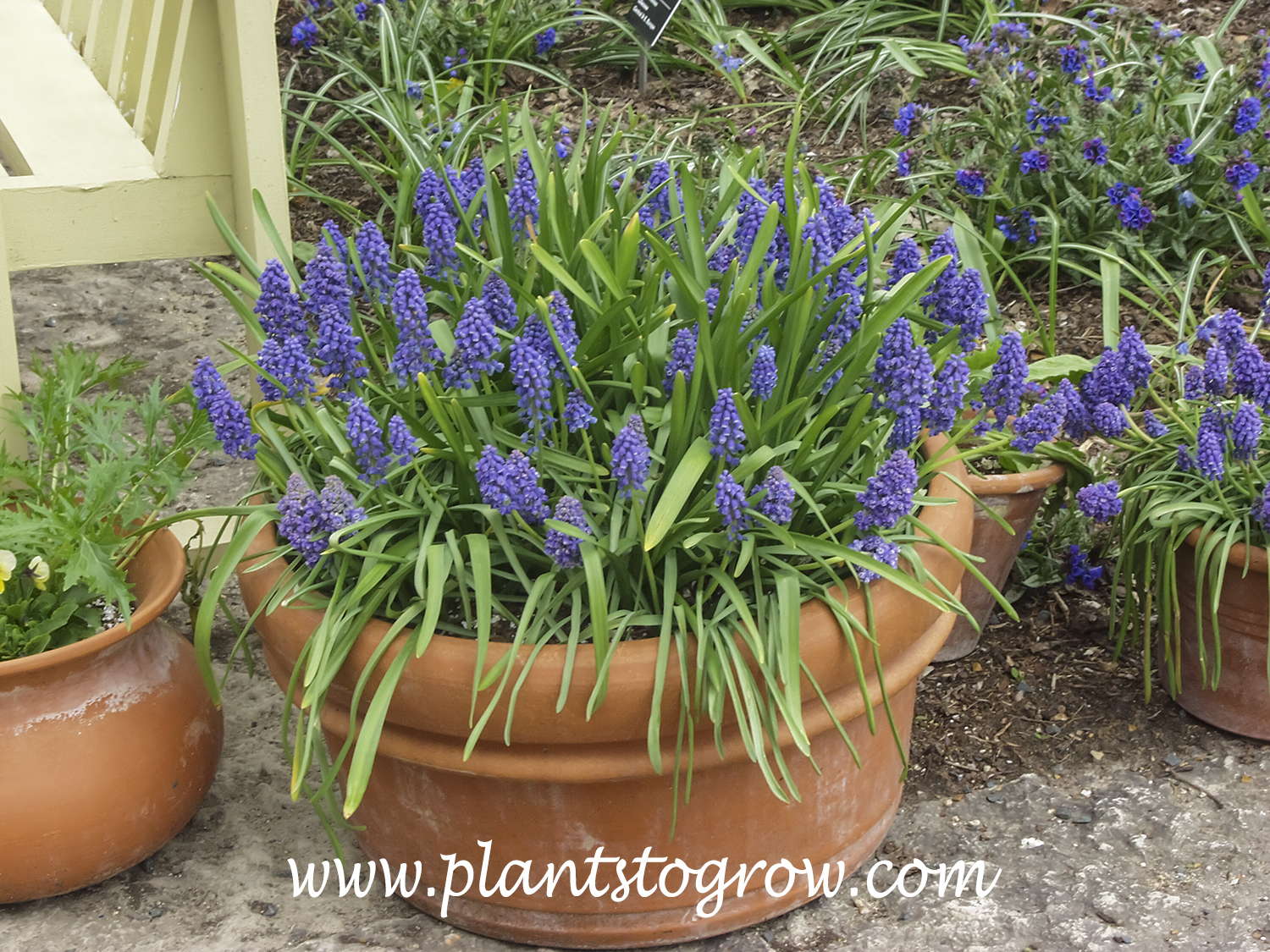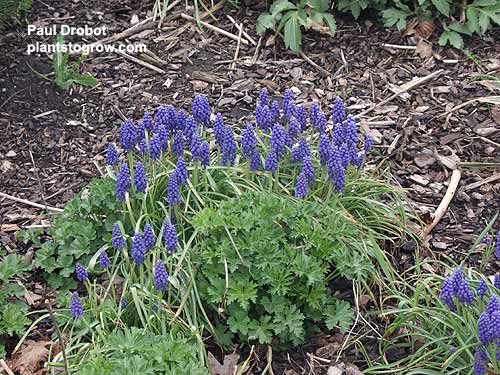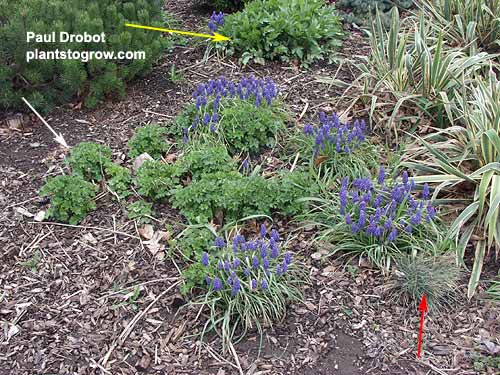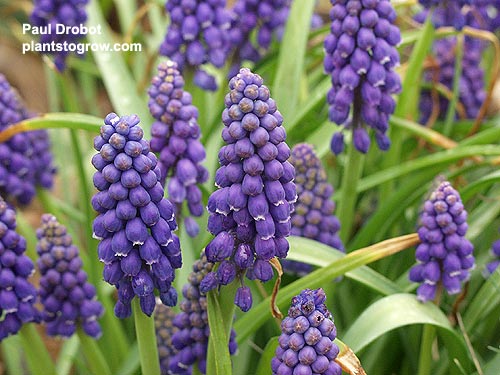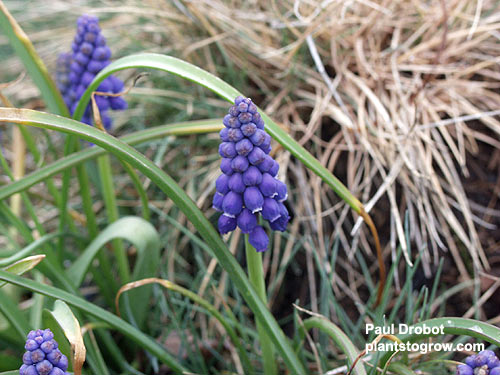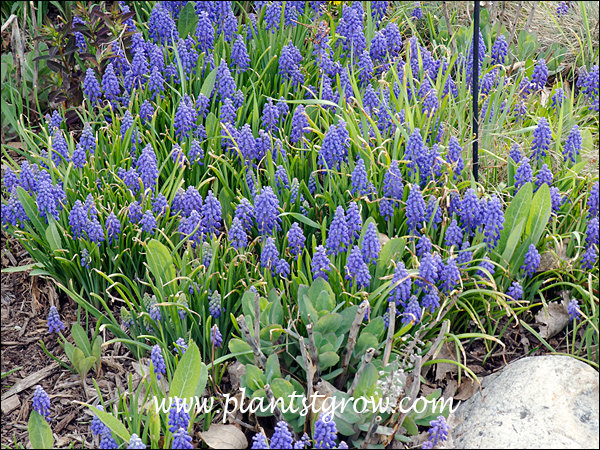| Description | Grape Hyacinth (Muscari americana) is a durable, easy-to-grow, accommodating bulb. Excellent for naturalizing or combining with other bulbs. It can be invasive! |
|---|---|
| Plant Type | Bulbs, corms, tubers, rhizoms, etc., Site author's observations |
| Hardiness Zone | 4-8 |
| Sunlight | full sun to light shade |
| Moisture | average |
| Soil & Site | average to moist |
| Temperature | tolerated cold temperatures |
| Flowers | Tight racemes of flowers that vary in color from blue to purple to white depending on the cultivar. Blue seems to be the most popular color. The flowers on many cultivars will develop a white rim on the bottom of the flower petals. Flowers have a musky, sweet fragrance. The flower form is called glomerate, and the shape of each floret is called urceolate, meaning shaped like a pitcher or urn. |
| Fruit | circular seed pods |
| Leaves | After they die back in the spring, the grass-like leaves will reappear later in summer or early fall. No flowers, just green, grass-like foliage. |
| Stems | small bulbs |
| Dimensions | Reach about 5-6" tall. Plant the small bulbs 4-5" deep and space 1" to 3" apart, depending on the cultivar. |
| Maintenance | They can be very aggressive if the spot fits their cultural needs. In some of my gardens, I dig up patches of the colonies to prevent them from running over the other plants. They are easily transplanted. To help avoid the rampant spread, deadhead the flowers to prevent reseeding. |
| Propagation | bulbs, seeds |
| Native Site | Native to the north side of the Mediterranean. Found growing in woodlands and meadows |
| Cultivar Origin | Introduced to Europe in 1576. |
| Misc Facts | Muscari is derived for some authorities from Greek muschos, Perisan mushk (musk), or Sanskrit mushka (testicle), referring to the sweet musky aromatic smell of some flower species. (www.plantlives.com). The name comes from their flowers which are like groups of grapes, |
| Author's Notes | When I was a landscaper, a few gardens I maintained were planted with Grape Hyacinth. I deadheaded them and put the tops in my compost pile; little did I know these plants started popping up in different areas of my garden. This bulb can be invasive. In a few places in my gardens, they have dominated the area. After dying back, they will reappear later in summer or early fall. No flower,s just green, grass-like foliage. |
| Notes & Reference | #57-Spring Flowering Bulbs (Dr. A.A. DeHertogh), #59-Naturalizing Bulbs (Rob Proctor), #60-The American Gardeners World of Bulbs (Judy Glattstein) |

Cart
